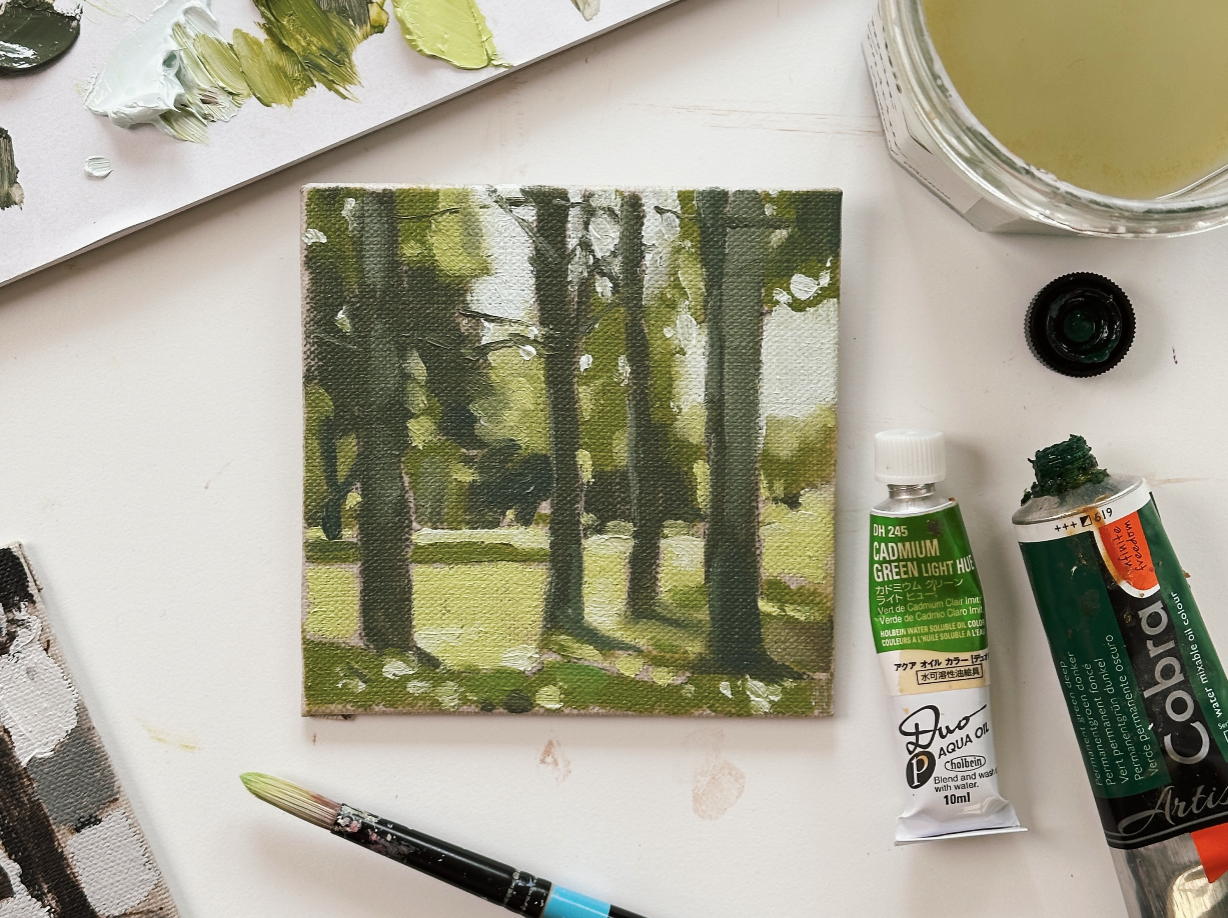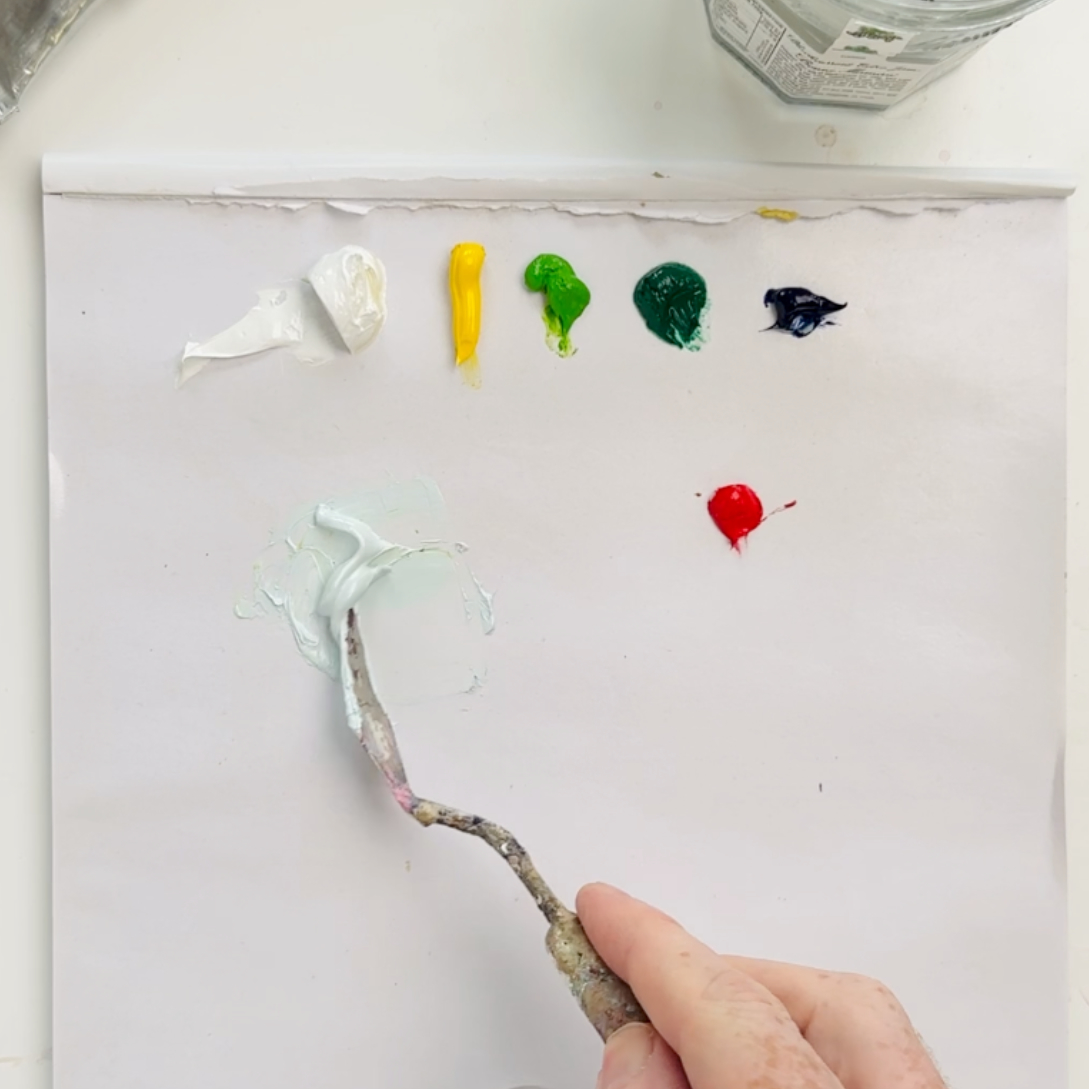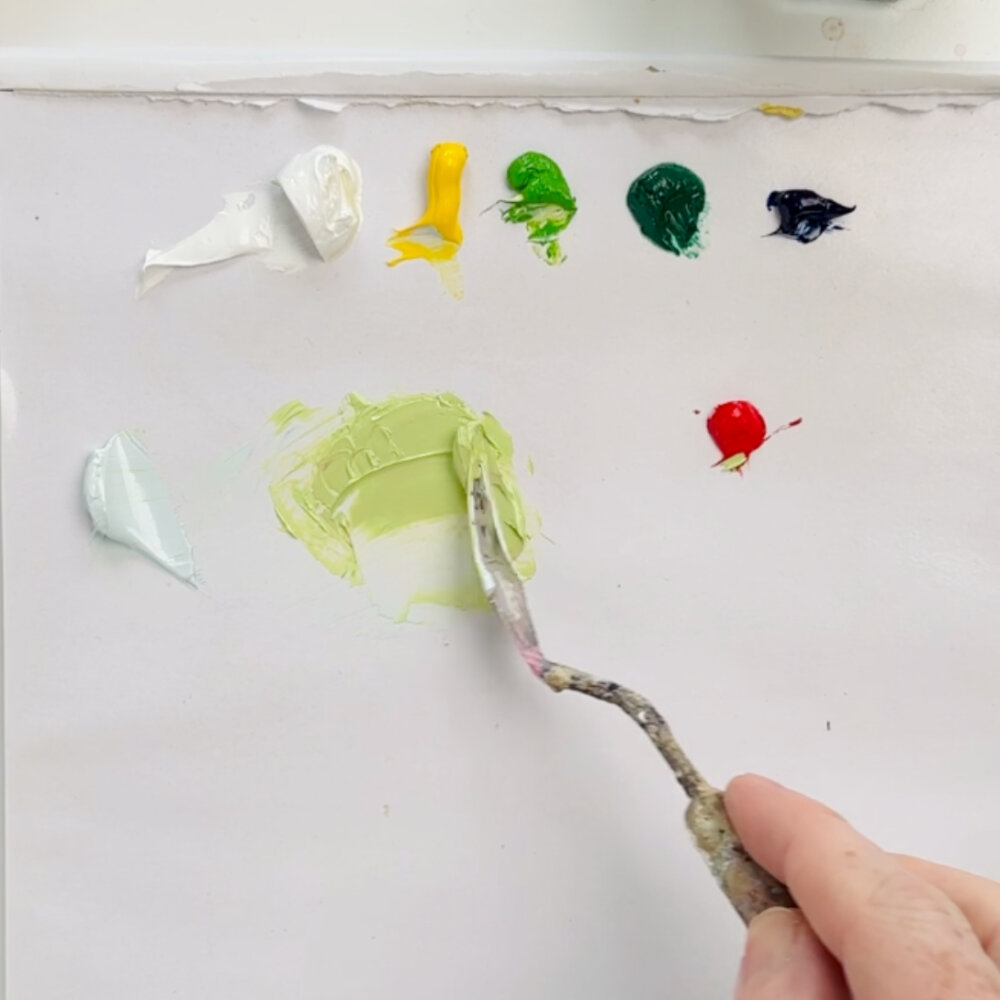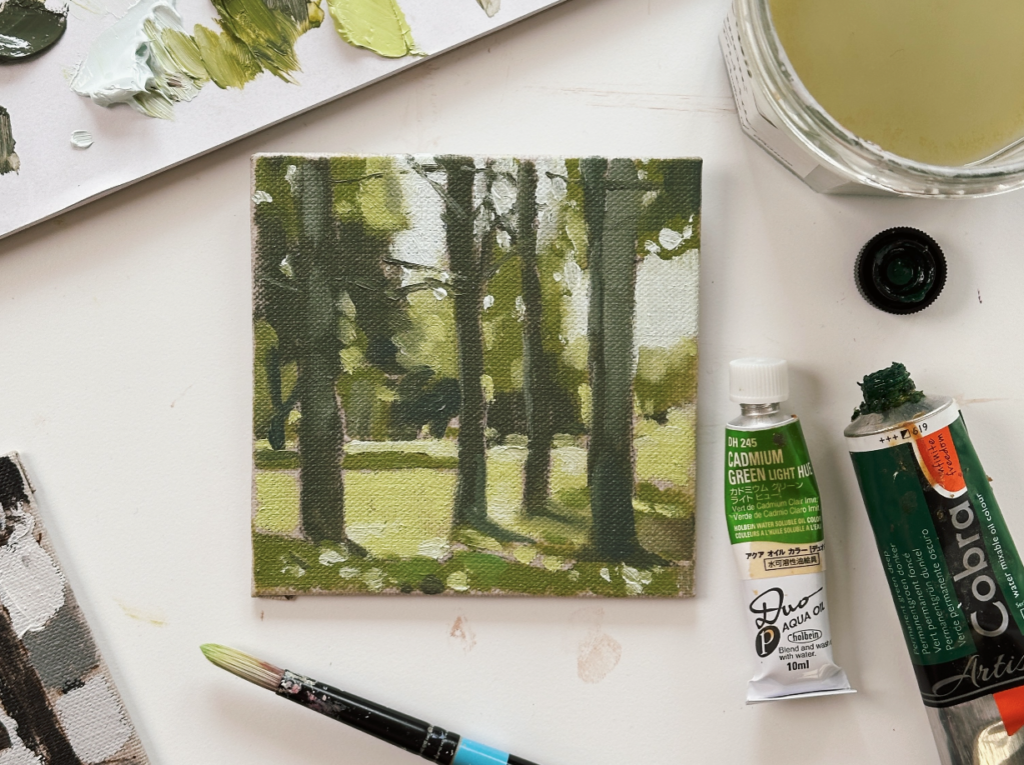
Morning Class,
Last week, we explored Carlson’s theory on angles, and I received an interesting comment from a reader asking how complicated it would be to apply the principles to colour.
“I especially love black and white painting. I’m looking forward to trying this. How does it work then with colour? Seems it could get quite complicated.” – Laura
Well, it’s simpler than you might think!
I thought it would be handy to demonstrate painting trees using just four colour mixes. I’m using water-mixable oils, but you can follow along with acrylics or traditional oils too.
Preparing Your Palette: Mixing the Base Colours
Let’s get started by mixing the four base colours in different values. Remember, value refers to how light or dark a colour is.
From left to right, Titanium White, Cadmium Yellow Light, Cadmium Green Light, Permanent Green, Ultramarine Blue Light and below is Pyrrole Red.

First, the sky mix, using white and a small touch of Ultramarine Blue Light.
This gives us a light, airy sky colour. (Note how there was a little bit of green left on my palette knife, but it works for this painting.)

Next, we’ll create the ground mix. Take a bit of the sky colour, then add some Cadmium Yellow Light and a touch of Cadmium Green Light. Mix these, and finally, add a speck of Pyrrole Red to drop the saturation slightly.
This creates a natural, earthy tone for the ground.

For our slanted plane, we’ll mix Cadmium Green Light, Permanent Green, Cadmium Yellow Light, and a speck of Pyrrole Red.
This gives us a vibrant, rich green that’s perfect for those angled planes in the landscape.

Finally, the trees. Combine Permanent Green and Pyrrole Red to make a lovely rich dark green, then a touch of Titanium White to lighten the value.
This mix gives us a dark, yet vibrant green that will make our trees pop against the background.
OK, colours ready, let’s go!
Applying the Principles of Carlson’s Angles

Applying the principles of Carlson’s angles, use the sky mix for the top parts of the canvas, the ground mix for the base, the slanted plane mix for angled surfaces, and the tree mix for the trees themselves. Keep your strokes loose and varied, and remember to think about the direction of light and shadow. This will add depth and realism to your painting.
Here’s our subject drawn out with a pencil. You can download the sketch from the blog to follow along. I’m using a size 4 round Aspen brush from Princeton and water, both as a diluent and for washing the brush.
Blocking in the Darkest Values for Tree Trunks

First, I start with the darkest mix and block in the shapes of the tree trunks. Focus on the overall shape rather than individual details.
Next, I move on to the tonal masses of the trees. Instead of painting each leaf or branch, I combine the shapes into one tonal mass to create a cohesive look.
Make sure to paint the cast shadows under the trees; this really helps establish the illusion of a strong light source.
Once the tree trunks and masses are blocked in, I wash the brush out well in water and dry the bristles on a paper towel.
Adding Depth with Slanted Planes and Ground Colour

Now, I jump to the slanted plane. Follow the shapes as they weave between the tree trunks and leaves in the foreground.

After cleaning the brush, I paint in the ground colour. This lighter value starts to bring more life to our landscape. Be sure to include all the little dashes of light between the trees to add depth and interest. The point on the round brush can be handy for this.
Final Touches: Painting the Sky and Enhancing Details
The final, lightest area is the sky.

I apply the sky colour a little bit thicker and paint in some sky holes. If you’re using oils, remember you need to be more deliberate with your marks to avoid the colours blending together and becoming muddy.
Okay, so here is our painting simply blocked in, we haven’t mixed between the colours yet, just used our first mixes and it reads surprisingly well.
Now, we can start refining and mixing our initial four base mixes to add subtle hues.
For instance, a little white added to the darkest mix helps to separate a tree trunk. Mixing between the greens helps with the distant trees. If you wanted, you could develop the painting further by adding stronger warm red-based mixes, but this approach already looks great, and just keeping it this simple effectively demonstrates the theory in colour.

So that’s it!
You can create a beautiful, cohesive landscape with just four colours and an understanding of value. If you have any questions, leave a comment below.
Until next time, happy painting!
